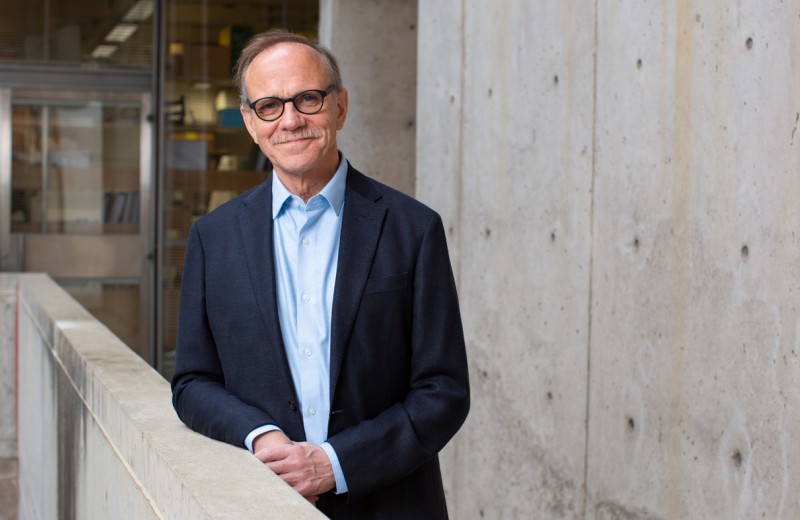Gladstone NOW: The Campaign Join Us on the Journey✕

The Wilsey family is supporting revolutionary rare disease research in the lab of Gladstone’s Shinya Yamanaka. [Photo: © Carrie Chen Photography]
With support from the Wilsey Family, Gladstone is studying a rare genetic condition that could provide clues to curing a whole host of diseases.
“Research into rare diseases is the ticket to major scientific breakthroughs,” says Matt Wilsey, a Bay Area-based tech entrepreneur and philanthropist who, along with his wife, Kristen, and parents, Mike and Bobbie, are supporting revolutionary rare disease studies in the lab of Gladstone’s Shinya Yamanaka, MD, PhD.
The importance of rare disease research became apparent to the Wilseys when Grace, the first child of Matt and Kristen, was born with developmental disabilities that nearly 100 experts across the globe could not diagnose. After more than three years, geneticists at Baylor College of Medicine finally identified the source of Grace’s condition: two mutations in a little-known but critical gene called NGLY1 (“n-gly-one”). At the time, only five other patients around the world had been diagnosed with conditions caused by two NGLY1 mutations. Symptoms include severe gross and fine motor delay, liver disease, dry eyes, and seizure-like activity. These patients currently have no ability to lead an independent life.
Matt and Kristen approached the diagnosis as they did every challenge—head on. They established the Grace Wilsey Foundation, dedicated to finding treatments and cures for NGLY1 Deficiency, and advocated for rare disease research at every opportunity. Their path eventually led them to Japan. After an introduction from their friend, Hiroshi Mikitani, the Wilseys met Dr. Yamanaka to discuss whether stem cells could play a role in correcting NGLY1. “We weren’t about to turn down any option,” Matt says. “A good idea can come from anywhere.”
Coincidentally, Mike Wilsey had just had his own regenerative medicine discussion with another Gladstone expert—Deepak Srivastava, MD, director of the Gladstone Institute of Cardiovascular Disease and director of stem cell research at Gladstone—whom he met at a recent research symposium. The Wilseys began to create a research proposal with Gladstone soon after.
“Our first goal was to prove NGLY1 was the cause of Grace’s loss of function,” says Matt. “Long term, we intend to use regenerative tools, like induced pluripotent stem cells (iPSCs), to generate tissue that we can use to screen drug compounds.”
Today, the Yamanaka lab at Gladstone continues to make great progress on defining the function of NGLY1—receiving a recent boost from the addition of Kazutoshi Takahashi, PhD, who worked with Dr. Yamanaka in Japan and led his Nobel Prize-winning discovery of iPSCs. Dr. Srivastava also joined with 50 other scientists tackling the issue at a first-ever conference organized by the Wilseys.
“It was the first time I’d been able to connect face-to-face with colleagues across the globe who are working on NGLY1,” says Dr. Srivastava. “With such an incredible depth and breadth of expertise focused on curing NGLY1 Deficiency, I think we’re going to beat this disease.”
As Matt points out, this research promises to impact much more than just NGLY1 Deficiency. “This kind of foundational work will likely inform the causes of many human diseases by revealing basic aspects of how cells function,” Matt says. “It’s like trying to swim against a strong current; you have to go at it from an angle.”
With so much potential, Matt encourages everyone he can to support the kind of basic research on rare diseases that’s happening at Gladstone. “Investing in fundamental rare disease research at a place like Gladstone is key,” he says. “You’re not just investing in this tiny disease that only affects a handful of people—you’re investing in science globally.”
Perceiving the Brain Like Never Before
Perceiving the Brain Like Never Before
Winner of the 2024 Ogawa-Yamanaka Stem Cell Prize, Rusty Gage made landmark discoveries that fundamentally shifted the field of neuroscience.
Awards Ogawa Stem Cell Prize Profile Stem Cells/iPSCsGladstone to Present 2024 Ogawa-Yamanaka Stem Cell Prize to Neuroscientist Rusty Gage
Gladstone to Present 2024 Ogawa-Yamanaka Stem Cell Prize to Neuroscientist Rusty Gage
Gage has reshaped our understanding of stem cells in the adult brain with landmark discoveries that may contribute to the development of new or better therapies for neurological disorders.
Awards Institutional News News Release Ogawa Stem Cell Prize Stem Cells/iPSCsGladstone to Expand Stem Cell Research Capabilities with Multi-Million Dollar Regenerative Medicine Grant
Gladstone to Expand Stem Cell Research Capabilities with Multi-Million Dollar Regenerative Medicine Grant
Funds from the California Institute for Regenerative Medicine will allow Gladstone to bolster its disease-modeling technologies, add robust CRISPR screening capabilities, and educate young researchers on the latest in stem cell science.
Grants CRISPR/Gene Editing Disease Models Organoids Regenerative Medicine Stem Cells/iPSCs



